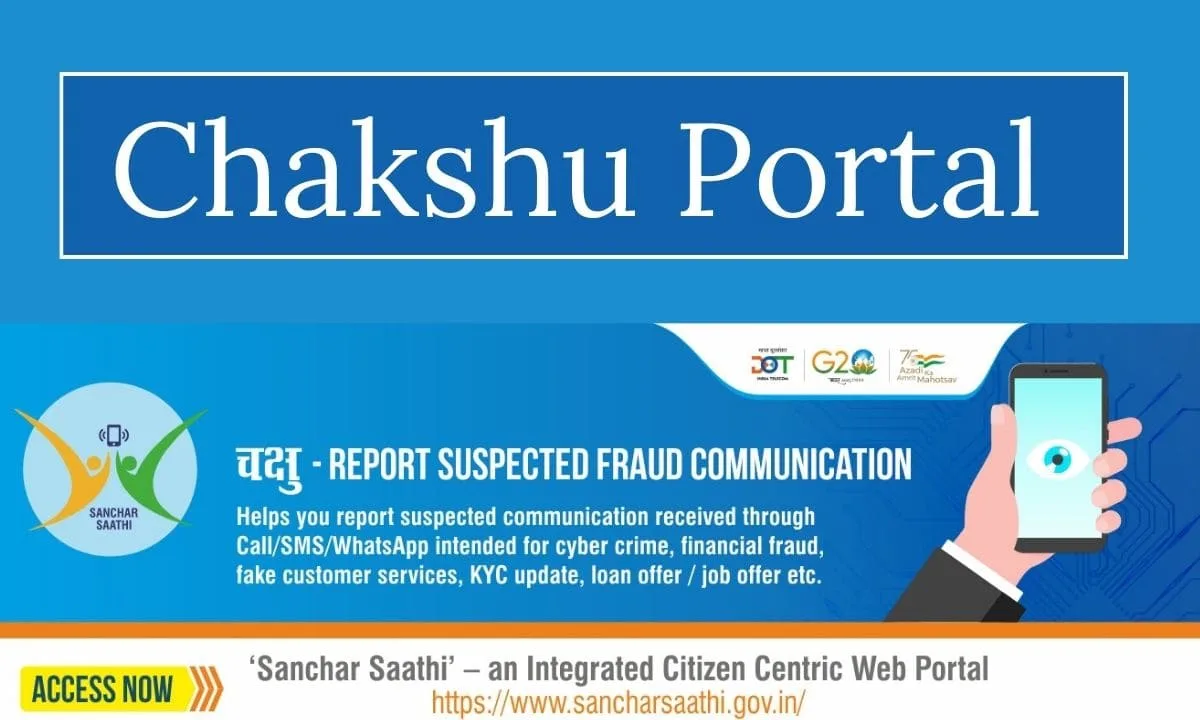In line with the Sanchar Saathi project, the government launched the Chakshu portal on March 4, 2024, as a significant initiative in the fight against cyber fraud. This portal, an integral part of the Sanchar Saathi project, empowers citizens to report suspected fraudulent messages targeting telecom service users. Instances of fraudulent communications related to bank accounts, payment wallets, SIM cards, and false identities, among others, can be submitted through the Chakshu portal. For more detailed information on the Chakshu Portal, refer to the article below.
What is the Chakshu Portal?
The Chakshu Portal is a crucial measure in safeguarding the digital assets of every citizen, specifically designed to combat fraud and misuse of communication systems. Its integration with the Sanchar Saathi portal ensures seamless information exchange among stakeholders. Notably, these collaborative efforts have led to the freezing of Rs 1,008 crore in bank accounts associated with illicit transactions, resulting in savings of approximately Rs 1,000 crore over the past nine months. Users can utilize the Chakshu portal to report instances of leaked cellphone numbers, and wrongdoers identified through these reports will face appropriate consequences. You can report to the Chakshu portal in case of
- KYC-related Frauds
- Impersonation Scams
- Fake Customer Care Services
- Sextortion Attempts
- Online Job, Lottery, Gifts, and Loan Offers
- Automated and Robo Communications
- Malicious Links and Websites
Important Note:
If you have experienced financial losses due to fraud or fallen victim to cybercrime, please report your case immediately to the dedicated cybercrime helpline at 1930 or visit the official website of Cybercrime. Please be aware that the Chakshu facility is not equipped to address cases involving financial fraud or cyber-crime.
| Chakshu Portal 2024 Key Highlights | |
| Chakshu Portal Launch Date | March 04, 2024 |
| Chakshu Portal Official Website | Chakshu Portal |
| Chakshu Portal Objective | To Report Suspected Fraud Communication |
| Chakshu Portal Beneficiary | Citizens |
| Chakshu Portal Benefits | KYC-related Frauds Impersonation Scams Fake Customer Care Services Sextortion Attempts Online Job, Lottery, Gifts, and Loan Offers Automated and Robo Communications Malicious Links and Websites |
| Chakshu Portal Under Which Ministry | Ministry of Communications |
| Chakshu Portal Launched By | Ashwami Vaishnav |
| Chakshu Portal Mode of Application | Online |
| Chakshu Portal Helpline Number | 1930 |
Objectives of the Chakshu Portal:
The primary objective of the Chakshu Portal is to empower users to report fraudulent calls and messages, as well as instances where companies have disclosed their phone numbers without consent. To combat fraud effectively, the Department of Telecom has established the DIP (Data Intelligence Platform), facilitating streamlined information sharing with banks, financial institutions, and law enforcement agencies. This collaborative approach aims to enhance the overall security of digital communication systems and protect citizens from fraudulent activities.
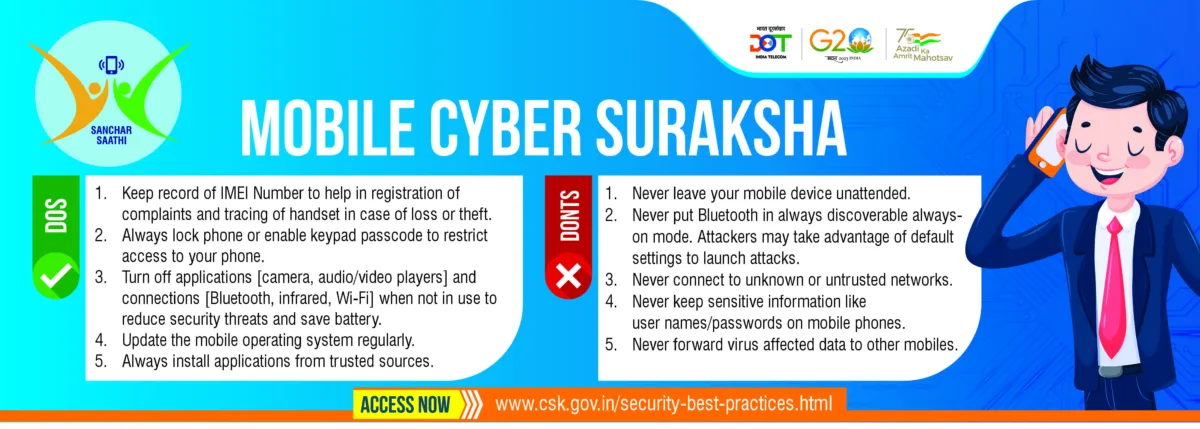
What is Suspected or Unsolicited Communication?
Suspected or unsolicited communications refer to messages received via calls, SMS, or WhatsApp that are aimed at cybercrime, financial fraud, impersonation, and various deceptive activities. These communications may involve false representations, such as:
- KYC-related Frauds: Messages related to fraudulent Know Your Customer (KYC) processes for banks, electricity, gas, insurance policies, etc.
- Impersonation Scams: Attempts to impersonate government officials or relatives for deceitful purposes.
- Fake Customer Care Services: Deceptive communications posing as customer care helplines to trick individuals.
- Online Job, Lottery, Gifts, and Loan Offers: Fraudulent messages offer online jobs, lottery winnings, gifts, or loans to lure recipients into scams.
- Sextortion Attempts: Communications involving extortion or threats of exposing personal information of a sexual nature.
- Automated and Robo Communications: Multiple automated or robo-communications may be part of scams or phishing attempts.
- Malicious Links and Websites: Messages containing links to malicious websites may lead to security breaches or phishing attacks.
These suspected communications cover a wide range of fraudulent activities, with perpetrators attempting to exploit individuals through deceptive means.
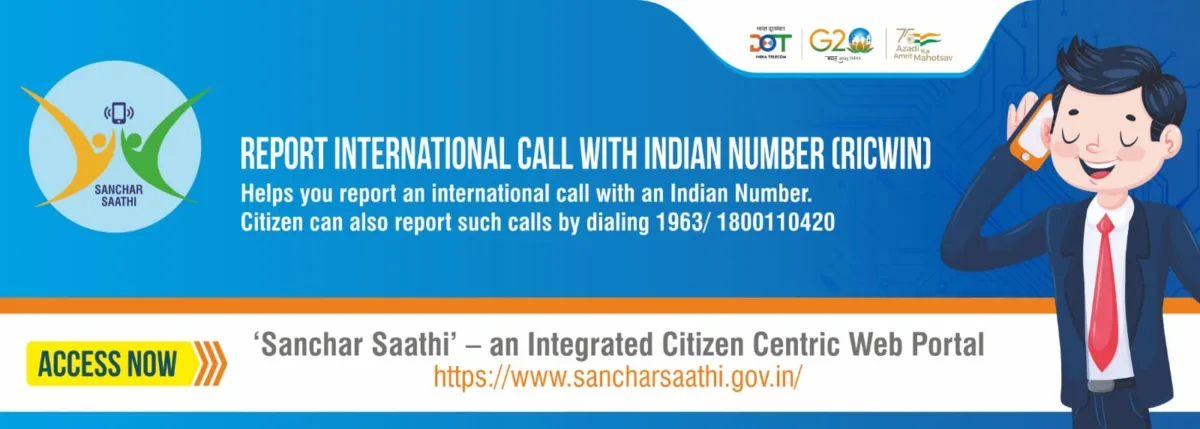
Benefits of the Chakshu Portal
- Enhanced Information Sharing: The establishment of the Data Intelligence Platform (DIP) by the Department of Telecom enables seamless information sharing with banks, financial institutions, and law enforcement, enhancing the collective ability to prevent fraud.
- Improved Cyber Fraud Identification: The collaborative efforts of the Digital Intelligence Platform and Chakshu Portal are expected to significantly enhance the identification and prevention of cyber fraud, contributing to a more secure digital environment.
- Thorough Investigation and Action: Numbers submitted through the Chakshu Portal undergo thorough investigation, leading to appropriate actions being taken. Close collaboration with the Reserve Bank of India and other financial institutions ensures the retrieval of money and the blocking of accounts associated with illegal activities.
- Effective Blocklisting: Over the past nine months, 1.7 million mobile numbers, predominantly linked to fraudulent activities, have been blocklisted. This proactive measure aids in curbing the use of mobile numbers for illicit purposes.
- User-Friendly Reporting: Individuals wary of financial fraud, cybercrime, or impersonation can conveniently report such incidents through the Sanchar Saathi portal, providing an accessible avenue for citizens to contribute to maintaining a secure digital landscape.
How to Report Fraud and Spam Calls Using the Chakshu Portal
To report suspected fraud communications through the Chakshu facility, follow these steps:
- Go to access the Sanchar Saathi portal.
- Click on “Citizen Centric Services” and then select ‘Chakshu – Report Suspected Fraud Communication.’
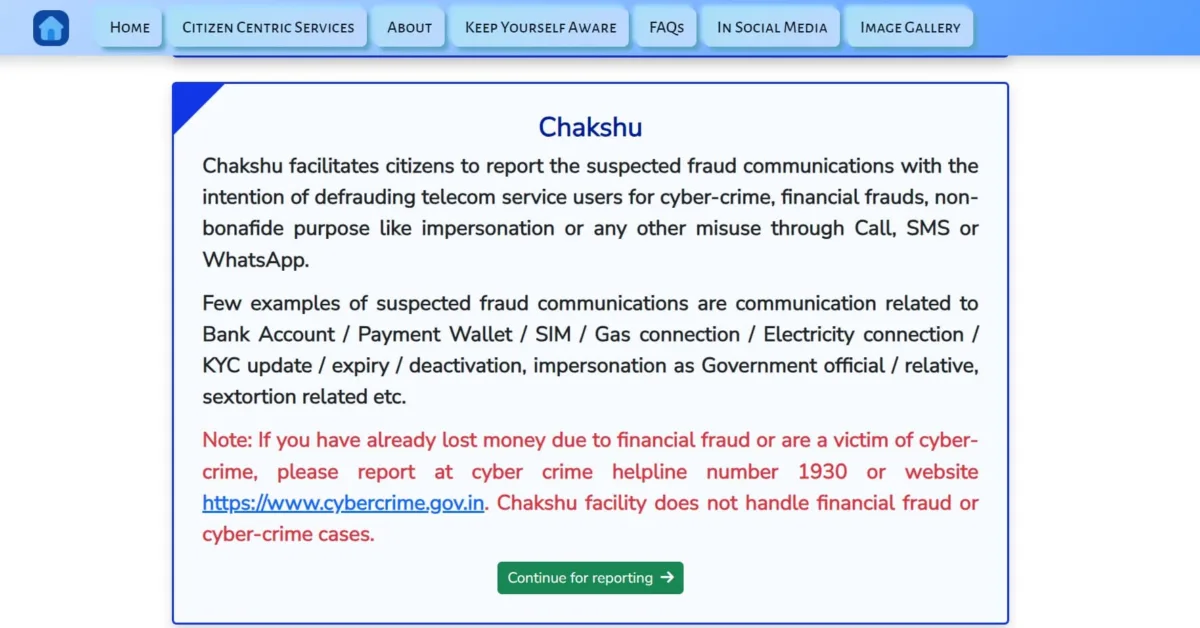
- Indicate the medium (call, SMS, WhatsApp) and select the category that best describes the suspected fraud communication.
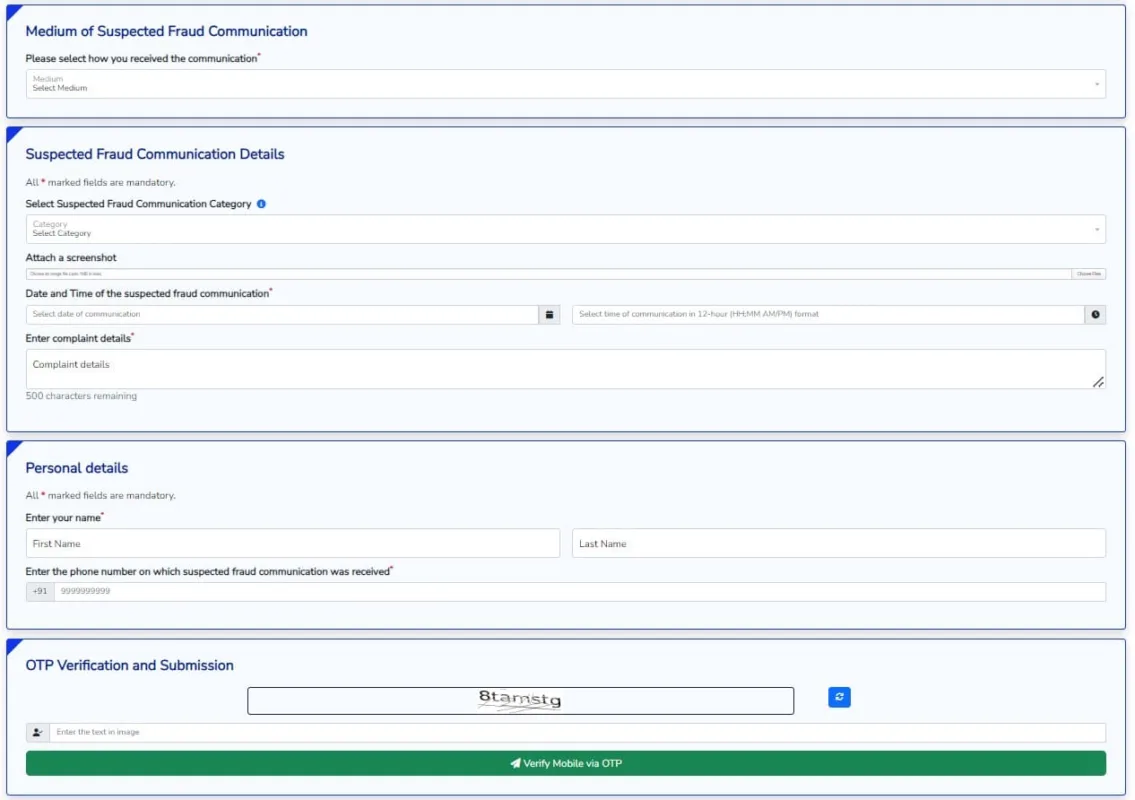
- Furnish details related to the suspected fraud communication. Optionally, you can upload a screenshot of the communication.
- Verify your mobile number through a One-Time Password (OTP) sent to your registered mobile number.
- Enter your name as part of the reporting process.
- Click the submit button to finalize and submit the request for investigating the suspected fraud communication.
By following these steps, users can effectively report instances of suspected fraud communications through the Chakshu facility on the Sanchar Saathi portal.
About Sanchar Sathi Portal?
The Sanchar Saathi portal is a citizen-centric initiative by the Department of Telecommunications aimed at empowering mobile subscribers. Its primary objectives include enhancing the security of mobile users and raising awareness about various citizen-centric initiatives of the government.
Through Sanchar Saathi, citizens can gain insights into the mobile connections issued in their name, have unnecessary connections disconnected, block or trace lost mobile phones, and verify the authenticity of devices when purchasing new or used mobile phones. The portal incorporates several modules, such as CEIR (Central Equipment Identity Register) and TAFCOP (Telecom Analytics for Fraud Management and Consumer Protection), to achieve these goals.
Know Your Mobile Connections (TAFCOP)
The TAFCOP module allows mobile subscribers to assess the number of mobile connections registered under their name. Additionally, it provides a mechanism to report any mobile connection(s) that are either unnecessary or unauthorized by the subscriber.
Mobile Identity Verification (KYM – Know Your Mobile/IMEI)
Through Know Your Mobile, you have the option to verify the authenticity of your mobile device before purchase. The IMEI (International Mobile Equipment Identity) is typically found on the mobile packaging box, as well as on the mobile bill or invoice. You can also check the IMEI number directly from your mobile device by dialing *#06#, and the IMEI will be displayed on the screen. If the mobile’s status is indicated as blacklisted, duplicated, or already in use, it is advisable to refrain from purchasing the device. KYM offers three convenient methods for verification: through SMS, the KYM app, or the Web Portal.
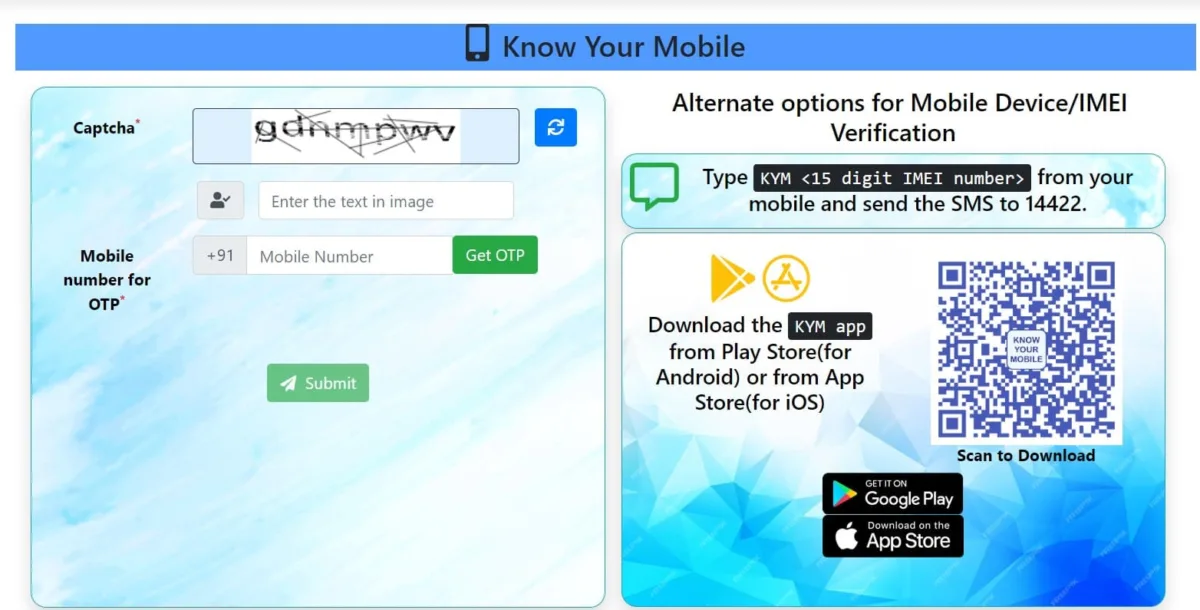
Sanchar Saathi Portal Launched 2024 | Block/ Retrieve Your Lost Phone
